Can solar panels go on flat roofs? Solar energy, a green energy source, presents a practical solution for powering homes and businesses. The integration of solar panels on flat roofs is an increasingly common sight in urban landscapes globally. Yet, many people wonder if flat roofs are suitable for solar panel installation.
Yes, solar panels can indeed be installed on flat roofs. It’s not only possible but also highly beneficial for energy-saving purposes. Flat roofs provide an ample area for solar panel installation, making them an ideal choice for harnessing solar energy.
This blog post will delve into the details of installing solar panels on flat roofs. We will explore the best types of flat roofs for solar panels, the installation process, and the benefits and challenges associated with this particular setup. Stay tuned as we shed light on this eco-friendly energy solution.
What Makes Flat Roofs Ideal for Solar Panels?
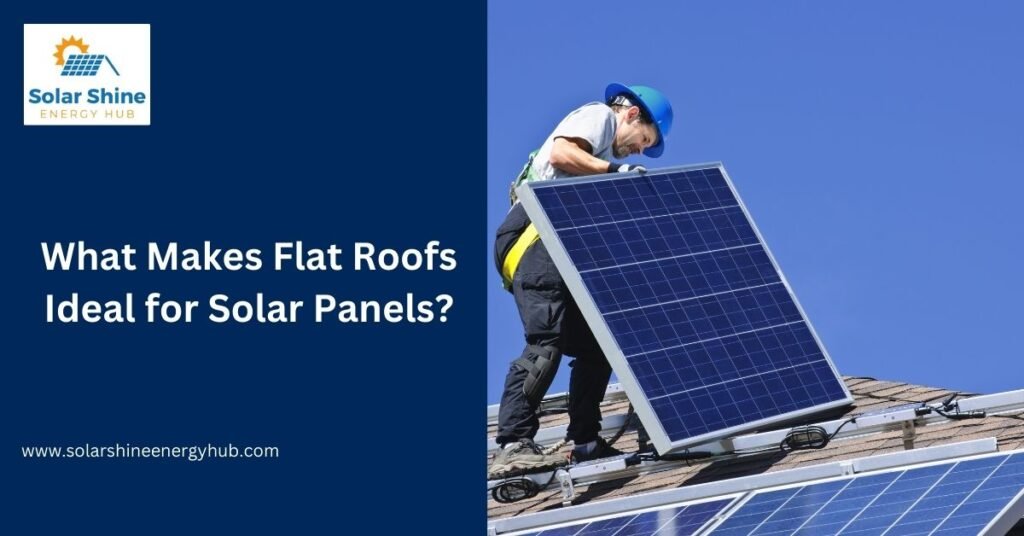
Flat roofs offer a broad and unobstructed surface area that is ideal for installing solar panels. Unlike sloped roofs, flat roofs allow for the placement of panels in any direction, ensuring maximum sunlight exposure. Therefore, solar panels can generate optimum output, increasing the energy efficiency of the building.
Another advantage of flat roofs is the ease of maintenance. Solar panels need regular cleaning and servicing to stay efficient, and flat roofs provide easier and safer access to the panels. It saves time and reduces the risk of accidents associated with maintaining solar panels on sloped roofs.
However, it’s essential to consider the weight-bearing capacity of the roof. Solar panels are heavy, and not all flat roofs may support their weight. Before installation, a thorough evaluation of the roof’s structural integrity is necessary to prevent any potential damage.
How is the Installation Process on Flat Roofs?
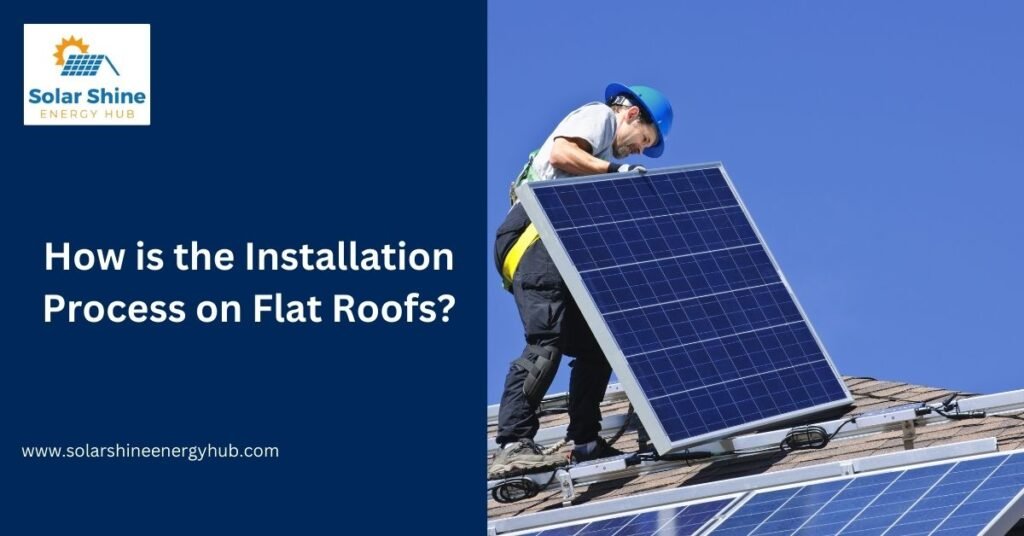
The installation process on flat roofs is straightforward but requires careful planning and execution. To begin with, the surface area needs to be measured accurately to ensure that the solar panels fit perfectly. The orientation of the panels is also crucial to capture the maximum amount of sunlight, and this often involves a south-facing direction in the northern hemisphere.
The next step is to mount the solar panels. For flat roofs, installers typically use ballasted mounts that do not penetrate the roof, eliminating the risk of leaks. These mounting systems use weight, like concrete blocks, to hold the solar panels in place, ensuring stability even during high winds.
The final step involves connecting the solar panels to your building’s electrical system. This stage must be performed by a licensed electrician to ensure safety and compliance with local electrical regulations. Once the installation is complete, regular maintenance checks and cleaning are necessary to ensure optimum performance of the solar panels.
Which are the Best Flat Roofs for Solar Panels?
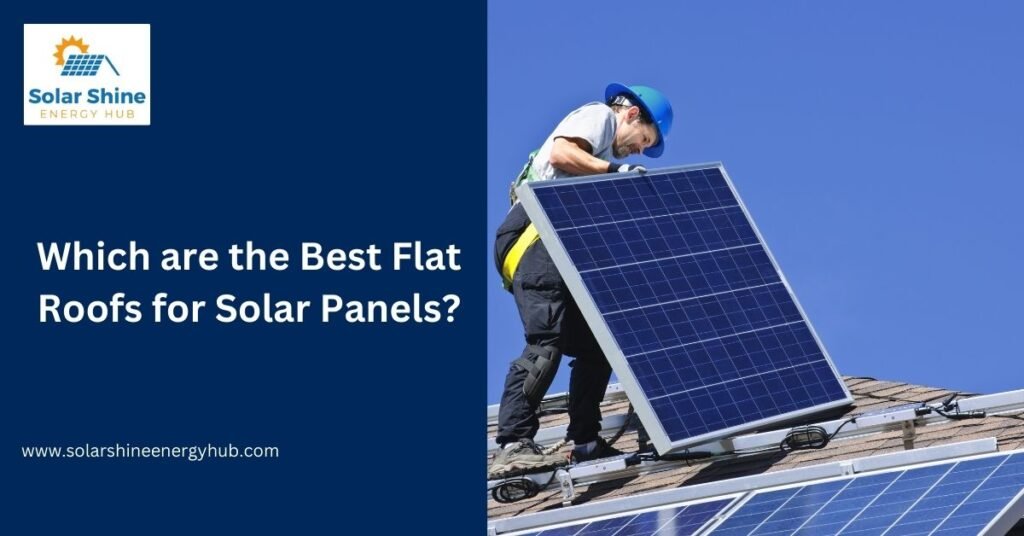
The best flat roofs for solar panels are those that have strong structural integrity, a broad surface area and are made of durable materials. Built-up roofs (BUR) are a good option as they are robust and can sustain extra weight. They can effectively accommodate the weight of solar panels, mounting equipment, and the ballast used for anchoring the system.
Another suitable type is the single-ply Membrane roof, specifically the EPDM (ethylene propylene diene monomer) type. These roofs are durable and resistant to UV radiation, which makes them ideal for solar panel installations. The light color of EPDM roofs also reflects sunlight, enhancing the efficiency of the solar panels.
Lastly, Modified Bitumen roofs are an excellent choice thanks to their superior durability and resistance to weather changes. These roofs can support the installation of heavy solar panels with ease. However, proper inspection and assessment by professional installers are always necessary to confirm the roof’s ability to withstand the load.
What Benefits Does a Flat Roof Offer for Solar Installation?
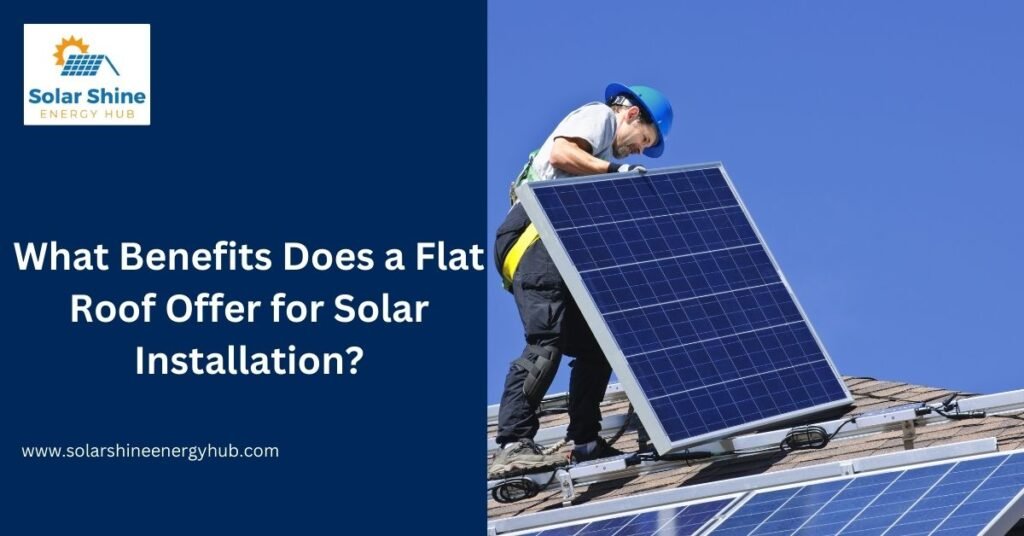
Installing solar panels on flat roofs brings numerous benefits. The expansive, unobstructed surface area of flat roofs allows for more solar panels to be installed. This in turn leads to a higher energy yield, which can significantly reduce electricity costs and promote energy self-sufficiency.
Flat roofs also allow for flexible positioning and angling of solar panels, optimizing exposure to sunlight. This flexibility ensures panels can capture the maximum amount of solar energy throughout the day, thereby increasing the overall efficiency of the solar power system.
Lastly, flat roofs provide ease of access for installation and maintenance. Without the steep inclines of pitched roofs, installers, and maintenance personnel can move safely and comfortably. This ease of access reduces installation time and makes routine maintenance, such as cleaning the panels, a simpler process.
What are the Challenges in Installing Solar Panels on Flat Roofs?
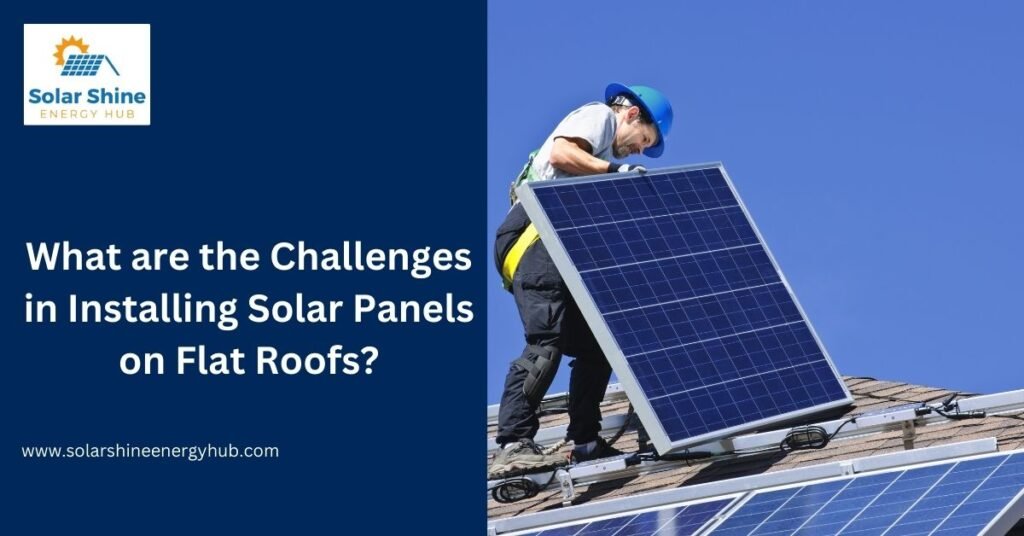
While flat roofs offer numerous advantages for solar panel installations, certain challenges can’t be overlooked. The primary concern is the weight-bearing capacity of the roof. Solar panels, along with their mounting equipment, are heavy, and not all flat roofs can sustain such weight. A thorough assessment of the roof’s structural integrity is essential before installation to mitigate the risk of any damages.
Another potential challenge is the angle of the solar panels. Because flat roofs lack the natural slant of pitched roofs, installers must angle the panels to optimize sun exposure, requiring additional mounting equipment and careful calculations. Incorrect angling can result in sub-optimal solar energy capture, compromising the system’s efficiency.
Finally, the impact of weather conditions, particularly wind, is another challenge. Flat roofs are more susceptible to high wind speeds, which can potentially displace the solar panels. Using heavy ballasts to secure the panels may mitigate this issue, but it adds to the overall weight of the roof. Therefore, flat-roof solar installations necessitate careful planning and execution.
Conclusion Can solar panels go on flat roofs
In summary, flat roofs present a promising option for solar panel installation due to their expansive surface area, ease of maintenance, and optimal solar energy capture. However, the success of such installations depends on careful planning, particularly in assessing the roof’s weight-bearing capacity and correctly angling the solar panels. Despite the challenges, the potential for energy savings and environmental sustainability underscores the value of this renewable energy option.